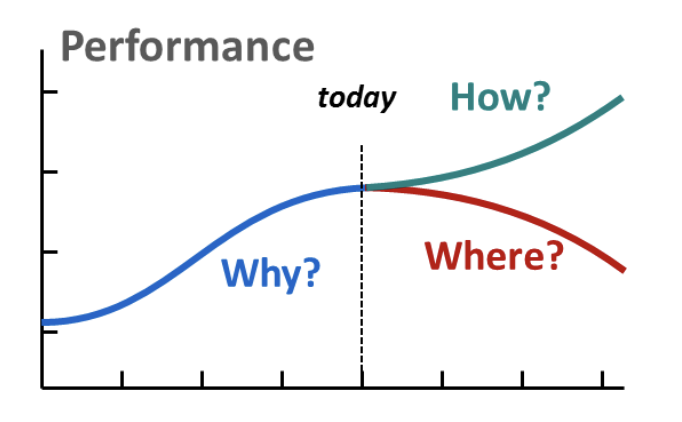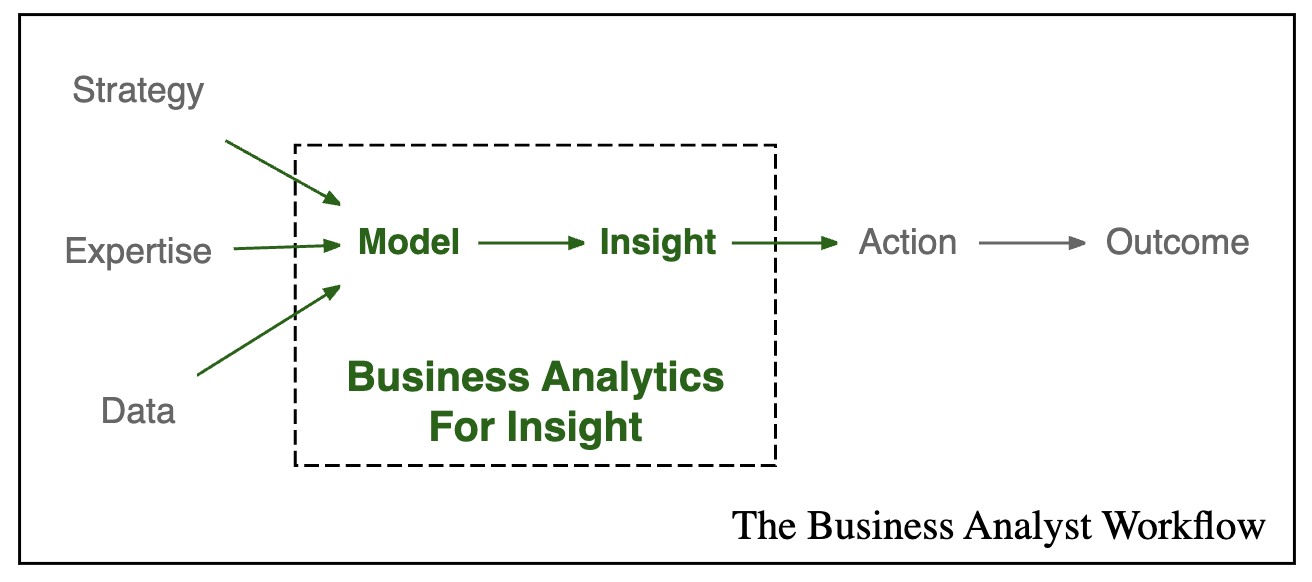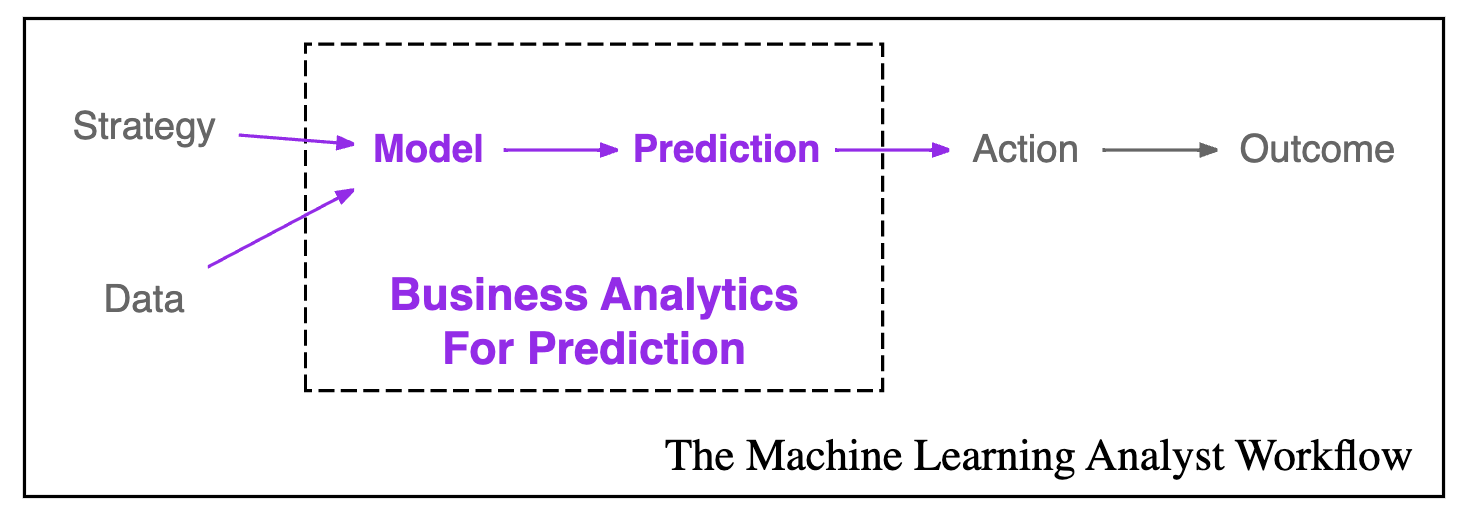Business Performance and Strategy
Arguably, we live in a volatile, uncertain, complex, and ambiguous world that we have to understand in order to navigate it well. By “world”, I mean the economy, society, environment, or any other complex system – especially when human behavior is involved. It is reasonable to ask: wasn’t it always the case, depending on how we define the terms, level of analysis, and point of view?
I think it’s a matter of scale and magnitude in VUCA dimensions, where an accelerating rate of change poses a great challenge to our capacity to adapt. Instead of an evolutionary or philosophical comment on why we need this field of data/decision science, I have two questions on my mind when it comes to living well or improving business outcomes: what is true and how should I act? 1
1 This implies that we already framed the problem and figured out what we want to achieve, and that indeed we chose the right goals and objectives. Moreover, the questions of epistemiology and ethics are a never ending topic for discussion and enquiry.
Let’s start from a business setting of an e-commerce, where we want to increase sales, customer satisfaction, and reduce costs. Imagine three scenarios, which neatly fall into the SWOT framework:

- We keep the status quo, doing everyting as before. What is the most likely trajectory of profits? Can we come up with an educated guess? If the trajectory looks good, that is our strenghts and compentencies contributing to it, if not, our weakness.
- A feared trajectory, that is, if our business is hit by a shock in supply chain, inflation, by competition or customer demand. It’s the threats.
- A desired or aspirational trajectory. Is it reasonable and realistically achievable? If yes, what strategy and tactics should we implement, how sould we act? This is our opportunity.
After this exercise, we defined more precisely where we stand, that is, quantify the current state of the firm. We framed the problem in terms of most relevant outcomes and we’re in the process of figuring out what are the optimal goals to aim for. Obviously, we need a mechanism, measurements to know that we’re on track and to recognize when we get there. Now, let’s go back to our two questions and unpack them:
- What is true? In the most general sense, we’re not asking for a mathematical and logical truth, but if it’s plausible, probable, deserves serious consideration, is backed by evidence. I also mean that we understand the underlying causal mechanisms. Not least, an assessment of the current situation. The metaphor which I suggest for this is “seeing clearly”, through the fog, illusions, and biases. 2
- How should I act? What is plausible doesn’t entirely answer this question, we can’t derive an ought from is.3 In business settings, I would think about action in terms of strategic alignment and optimisation.
2 Recommended reading: Scout Mindset by Julia Galef
3 This is one of the most important and applicable philosophical ideas, introduced by David Hume: when one makes claims about what ought to be that are based solely on statements about what is.
The only missing pieces from this mental model that I argue for is tremendously important: iteration and feedback. Due to VUCA, we can’t be sure our actions are optimal, or even that we’re solving the right problem, therefore fast iteration and feedback ensures we’re not taking too much risk, that we find out early about problems in our thinking and action, that we can change course to steer the ship back on track.
Sounds an awflul lot like Cybernetics, doesn’t it? Especially if we have the idea of a firm as a complex adaptive system as a pressuposition for this discussion.
Now that it’s more clear what I meant in the course introduction by improving business outcomes and bringing value to organizations, I didn’t yet explain what does analytics, data science, machine learning, and AI do or are, and how to they fit in the picture we painted so far.
What is Strategy?
Sounds like a naive question, but bad strategy is prevalent – which comes from a misunderstanding about what is a strategy. I highly recommend this article published by McKinsey – we learn better from other’s mistakes.
In short, it is not just aspiration towards goal or having a vision or setting a target. By analogy, remember the SMART criteria when you’re setting goals. As true consultants, we can summarize the steps involved in developing a strategy in a matrix.
| Step | Outcome | Characteristics |
|---|---|---|
| Honest diagnosis | Identify obstacles | Few critical, relevant aspects |
| Guiding policy | General approach to overcome | Focused on key aspects |
| Coherent actions | Support policy with action plan | Coordinated and focused |
Since strategy informs so much of decision-making, know your firm’s strategy – ask around, understand it, contribute to it. Call out bad strategy.
Business Analysts’ Workflow
This is a lot to take in! But there is one more thing to explore – a brilliant idea from a course by Dr. Adam Fleischhacker 4, which has a very similar philosophy, but is much more established and thought out, with many practical examples. Here is what he has to say in the course intro:
4 Adam Fleischhacker - Introduction to Business Analytics: Intro to Bayesian Business Analytics in the R Ecosystem
“You will translate real-world scenarios into both mathematical and computational representations that yield actionable insight. You will then take that insight back to the real-world to persuade stakeholders to alter and improve their real-world decisions.”
Dr. Fleischhacker makes an illuminating distinction between the business analyst’s workflow and a machine learning workflow, and sets up the normative criteria which make it successful. In our course, his workflow falls under the discussions related to causal inference. One interesting thing to note, is the convergence in the approach of an extremely diverse set of people: Cassie Kozyrkov, Vincent Warmerdam, Adam Fleischhacker, Richard McElreath, Andrew Ng – all coming from different backgrounds and activating in different environments and domains.

Let’s briefly review those normative criteria of this workflow. It might be a confirmation bias on my part, but the fact that these are present in the current course in one way or another, means I stumbled upon them by trial-and-error and painful mistakes:
- Outcome-focused: What is the point of fancy models, if we don’t achieve good or desired outcomes? If I was implying it so far, for the rest of the course we’ll ask this explicitly every time we tackle a business problem.
- Strategically-aligned: “Not all outcomes are created equal. Companies seeking to capture market share might increase expenses to aid market capture. Companies seeking to be cost leaders might leave some customers unsatisifed to keep expenses low. So a one-size-fits-all approach to defining good outcomes is ill-advised.”
- Action-oriented: We insisted so much on insights influencing, driving actions and decisions that there is little to add here. The remaining question is how can we communicate and articulate it well to convince decision-makers and stakeholders.
- Computationally Rigorous: Refers to the know-how, the engineering in the trenches. Even though we’ll spend most of the time in the frequentist land – I think the future is at the intersection of Causality and Bayesian Inference.
- Taking it one step further, this kind of workflow should be reproducible and (mostly) automated. This is why we’ll explore an ecosystem of software engineering tools and practices in the labs.
- Ideally, given in the hands of our clients/users in form of a full stack data app. This is where we take off our consulting hat and start building software products.
This is in contrast with a predictive, machine learning workflow, which we called before “workhorse models”, a “hammer” for which everything is a nail. We got a taste of its power and limitations, and tried to articulate which are appropriate applications for ML. This course gives equal attention to ML and Causality, due to the prevalence of use-cases from which we can learn from data to make tons of decisions at scale and high frequency.
